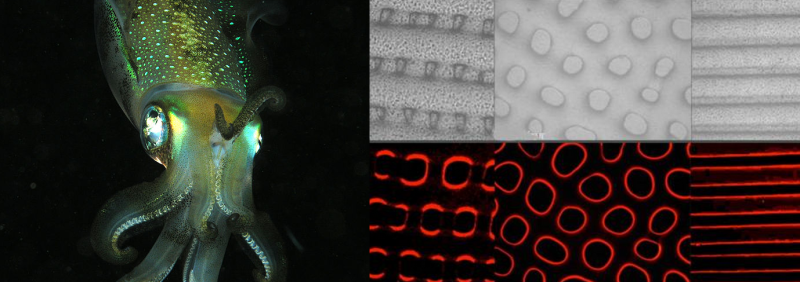There are many animals under the sea that can change its color within moments. Such capability of those animals have inspired scientists to create such materials that would be able to change its color or fluorescence and its texture at the same time. For long time scientists have been trying to make such material, and the great news is, finally a group of scientists has created a flexible material that can change its color rapidly like those underwater animals.
A Cephalopod is any member of the molluscan class Cephalopoda. Cephalopods are the most intelligent, most mobile, and the largest of all molluscs. Cephalopods include Octopuses, Squid, and Cuttlefish. However, Cephalopods are nature’s most skillful camouflage artists as they are able to change both the color and texture of their skin within seconds to blend into their surroundings. This ability has inspired our scientists to create a material that would be able to change its color within moments.
A group of MIT scientists have created a flexible material that can change not only its color or fluorescence, but also its texture at the same time. But the process has to be done by a remote control. Xuanhe Zhao, an assistant professor of Mechanical Engineering, has said that the new material is essentially a layer of electro-active elastomer (elastomer is a flexible, stretchable polymer and voltage can dynamically change surface textures of elastomers) that could be quite easily adapted to standard manufacturing processes and uses readily available materials. This could make it a more economical dynamic camouflage material than others that are assembled from individually manufactured electronic modules. In an initial proof-of-concept demonstrations, it’s been found that the material can be configured to respond with changes in both texture and fluorescence, or texture and color.
According to Stephen Craig, a chemistry professor at the Duke University, “The texturing and deformation of the elastomer further activates special mechanically responsive molecules embedded in the elastomer, which causes it to fluoresce or change color in response to voltage changes. Once you release the voltage, both the elastomer and the molecules return to their relaxed state—like the cephalopod skin with muscles relaxed.”
Scientists believe such technique “could potentially allow dynamic camouflage in different environments.” However, scientists have published their result in the journal Nature Communications. For further details, hit the link given below.
Source: PhysOrg
[ttjad keyword=”waterproof-camera”]



